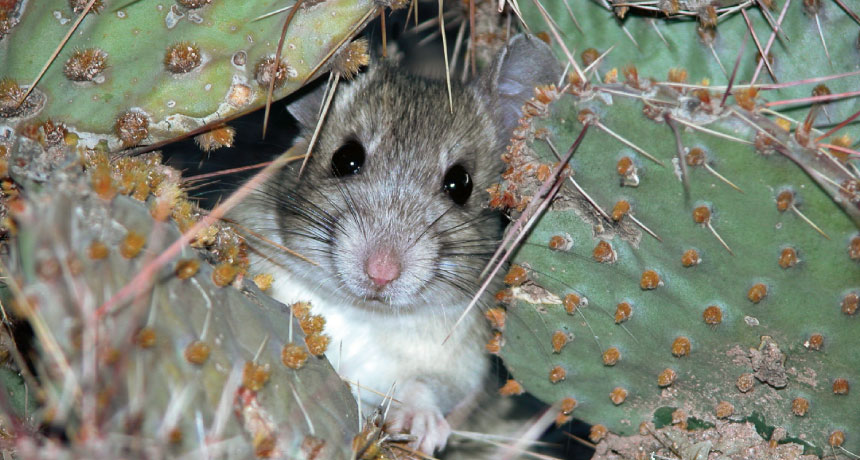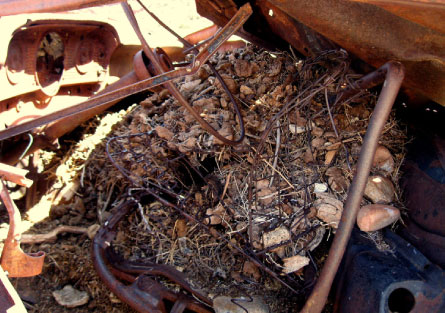‘Packrat’ is the new term for ‘really organized’

STOCKING UP Packrats will hoard just about anything, even cactus needles, to use in building their nests.
Gregory Smith/Flickr
A real packrat doesn’t store junk in its bedroom. Or its bathroom.
Its midden home may look like a heap of sticks, but inside, what a floor plan. What storage. The more eclectic hoarder species segregate pantry from lumber room from junk museum. The result is more orderly than the closets of some human packrats.
Some packrats like variety, while others specialize. Neotoma stephensi packrats hoard only juniper twigs, which make up 90 percent of their diet despite the plant’s toxicity. Packrats and the rest of their Neotoma woodrat cousins have quirky digestive systems more common in big grazing animals than in small mammals, allowing them to digest tough and even toxic foods.
“You can think of them as a miniature goat,” says Michele Skopec of Weber State University in Ogden, Utah. “They eat all kinds of crazy stuff.”

Neotoma albigula packrats, also called white-throated woodrats, collect a variety of crazy stuff too. They bring home abundant cowpats, rabbit pellets and other animals’ dung, often leaving it just outside the midden. Inside middens Skopec has found an old underwear band, a silvery ring, shotgun shells, a coyote paw, Doritos bags and much more.
Unlike satin bowerbirds, which decorate mating sites with such treasures as pen caps and clothespins, packrat collectibles aren’t on display. “They’re solitary animals,” Skopec says. “It’s not as if they’re bringing others in and saying, ‘Look at how sweet my interior is.’ ” Some of their stockpile is building materials, bedding or food, but the rest remains a mystery.
Searching for patterns in collecting, she and her students gave 10 white-throated woodrats a choice of jingle bells. In the lab, packrats pretty much liked it all. Shiny was as good as matte. Blue, the color of juniper berries they eat, didn’t appeal more than gold. Nor did jingly instead of silenced, or bells versus wads of paper and toothpicks. “They have this insatiable urge to cache,” Skopec says.
What so far appears to make a difference is the scent of another woodrat. These solitary-living, ferocious collectors may be disinclined to steal each other’s bling.






